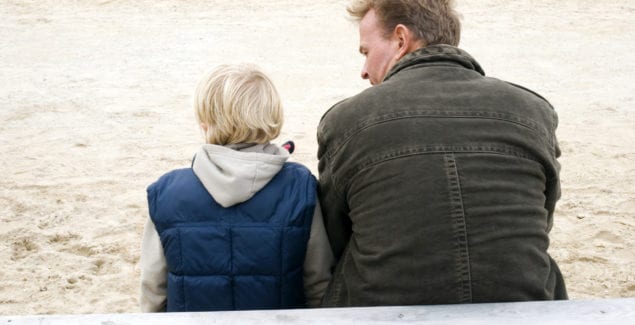Talking With Children About Suicide and Loss

Posted in: Grade School, Hot Topics, Teenagers, You & Your Family
Topics: Depression, Mental Illness + Psychiatric Disorders
Suicide is an unfortunate and unavoidable reality in the lives of children and youth. Whether it occurs with a family member, a schoolmate or peer, in the community, or in the media, the topic of suicide feels complicated and difficult to discuss with children. This arises from a number of sources, including the adult’s own feelings about the individual who died, cultural prejudices and societal taboos about discussing suicide, as well as fears and misconceptions about how children can handle frank and open discussions on the topic. We’d like to offer recommendations from multiple sources about how to talk with children in these difficult circumstances.
As with any sensitive topic of discussion, it’s important to prepare yourself first.
- What are your own feelings about suicide? Does it make you sad or fearful?
- Do you have strong religious or metaphysical beliefs about it?
- What are your own questions and unresolved views about suicide?
- Do you know anyone from your past who died by suicide? What was it like for you? What did you do to cope with the grief and loss? Did you talk with others about your reactions?
- With respect to a current situation, what do you know about the person who died? How close are you to that person? What do you know about how he or she died? Did you have any idea that the person was at risk?
Thinking about these questions yourself will help you anticipate those that a child might have, including concerns about how you are dealing with the death.
Of central concern is the child’s relationship to the person who died. If it is a parent or close family member, it will be paramount to acknowledge how hard it is to face the death of someone who is close to you, and to validate the sense of sadness, loss, confusion or anxiety/fear that the child and you are each experiencing.
Be sure to talk with the child in a quiet place without distractions and interruptions. It’s best to start with a simple statement like, “I want to talk to you about XXX who died by suicide—which means he killed himself. I want to hear what you’re thinking and feeling about it.” The rest of the conversation should be guided by the child’s response to that statement. If she wants to ask questions, encourage her to do so, and answer them as simply and honestly as possible. She may be too upset to talk, in which case it’s appropriate to acknowledge that it can be hard to talk when one is hurting or upset. You might want to share your own feelings of sadness and confusion by simply stating, “It makes me sad. I can’t really understand why XXX killed himself, but I’m pretty sure it’s because he was in a lot of pain.” If the child is interested in learning more about what might have caused the person to kill himself, it’s appropriate to mention that some people with illnesses like depression or bipolar disorder can get confused and make bad decisions. It’s also appropriate to express the idea that while you can’t really know what XXX was thinking at the time, he was probably in so much pain that he thought killing himself was the only way to stop it.
If she has additional questions that you can’t answer, it’s OK to simply state that you don’t know all of the answers. It’s also important to let the child know that dealing with feelings about XXX’s death will take time, and that you’re interested in talking with her further whenever she wants to talk.
Following this initial conversation, it’s important to check in with the child periodically to learn what she’s thinking and feeling about XXX, and whether she has any other questions about suicide. It’s good to speak about XXX in a caring and respectful fashion, and to emphasize his positive traits as well as the good things he did when he was alive. Remind her that if she ever finds herself struggling with painful feelings and needs to talk to someone, there’s always a way to get help.
Older children may continue to ask questions about suicide and mental illness. This is an important opening to engage them in learning more about mental health issues. If mentioned, it’s helpful to clarify the difference between death by suicide (usually the result of an illness) and “suicide bombers,” who are killing themselves in order to kill others as part of a military conflict.
From the standpoint of suicide prevention, it’s important to let children know that while it isn’t very common, other children may kill themselves when they’re feeling very upset, and that they’re unable to handle the pain in their lives. The most important idea to convey is that when someone is in terrible pain, it may be hard for him or her to see any way out of the situation except through death. And, that’s when it’s most important to let someone else know—so that a different solution to the problems the person is facing can be found.
For further information and support on this difficult topic, you might consult resources like the American Foundation for Suicide Prevention, and NAMI, as well as those listed below:

 Share
Share Tweet
Tweet





